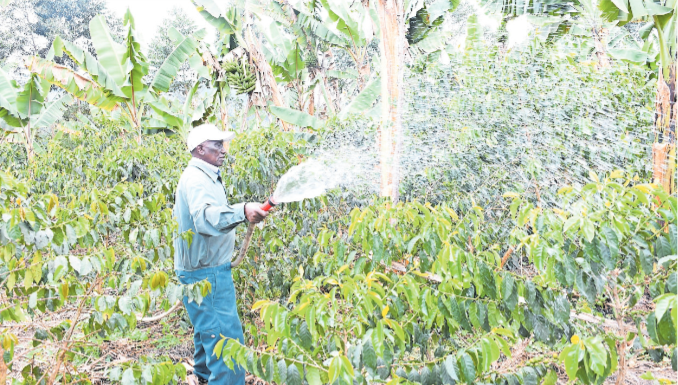Tailor irrigation rules to fit different communities

A farmer in Masaka uses stored rainwater to irrigate her garden of vegetables. PHOTO BY MICHAEL J. SSALI
What you need to know:
- The introduction of the microscale irrigation project in Kabale came shortly after the government started the restoration of degraded wetlands in the district and promised to give alternative forms of livelihood to the people who have been using wetlands as crop gardens.
This week, farmers in Kabale District appealed to the government to revise the conditions put in place before one can access the microscale irrigation project.
The requirement that farmers must contribute 25 percent of funding to the project and provide 2.5 acres of land has left many disadvantaged, according to the farmers.
Whereas some district leaders want the co-funding requirement to be reduced to about 10 percent, some say the project should be fully funded by the government and the requirement of 2.5 acres of land revised to allow many farmers to join since land holding in the area is small.
However, the district senior agriculture engineer, Mr Paulino Ndyabanoha, insists that 25 percent co-funding and proof of ownership of land measuring 2.5 acres are set by the World Bank funders. The irrigation programme is being implemented by the Ministry of Agriculture as part of the national irrigation policy.
The introduction of the microscale irrigation project in Kabale came shortly after the government started the restoration of degraded wetlands in the district and promised to give alternative forms of livelihood to the people who have been using wetlands as crop gardens.
According to the International Fund for Agricultural Development, about 40 percent of global food is produced on irrigated land. But in Uganda, the ratio of cultivated area under irrigation to the irrigation potential was less than one percent as of 2017.
Uganda is largely considered East Africa’s food basket since it exports more food than any other country in the region, but it lags behind Tanzania (3.6 percent), Kenya (2.0 percent) and Burundi (1.6 percent) when it comes to the ratio of cultivated area under irrigation.
But with the erratic rainfall the country now experiences due to the effects of climate change, Uganda needs to embrace large-scale irrigation if the economy is to continue benefiting from agriculture.
Since Uganda has one of the highest irrigation potentials in the world with more than 15 percent of its surface area covered by freshwater resources, the government needs to ensure that it comes up with policies that can attract more farmers into irrigation.
Take the farmers in Kabale, for instance. They say a 25 percent contribution is too high for them. The government could look into ways of subsidising it so that more farmers are attracted to irrigation.
Since not many farmers are familiar with this method of farming, more extension workers should be recruited so that more farmers are helped to become profitable using irrigation.
DWith climate change effects probably still going to get worse before they get better, the government must ensure we move away from rain-fed agriculture to ensure food security and other economic gains.
And this will be achieved by promoting irrigation.




